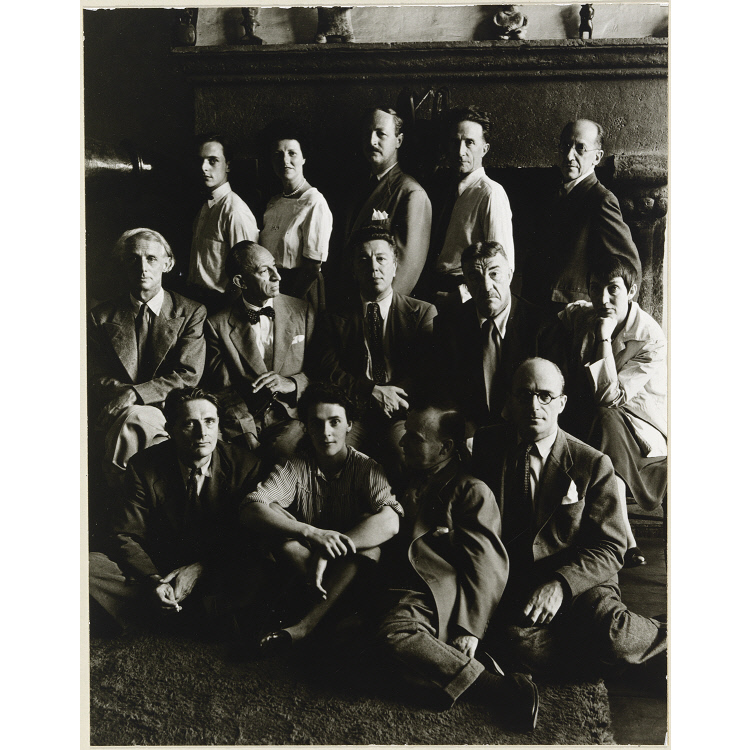John Ferren
John Ferren was one of the few members of the American Abstract Artists to come to artistic maturity in Paris. A native of California, in 1924 Ferren went to work for a company that produced plaster sculpture. He briefly attended art school in San Francisco. Later he served as an apprentice to a stonecutter. By 1929, Ferren had saved enough money to go to Europe, stopping first in New York where he saw the Gallatin Collection. He went to France and to Italy. In Saint-Tropez, he met Hans Hofmann, Vaclav Vytlacil, and other Hofmann students. When Ferren stopped to visit them in Munich, he saw a Matisse exhibition, an experience that was instrumental in shifting his work from sculpture to painting.(1) In Europe, Ferren did not pursue formal art studies, although he sat in on classes at the Sorbonne and attended informal drawing sessions at the Académie Ranson and theAcadémie de la Grande Chaumière. Instead, Ferren said, he "literally learned art around the café tables in Paris, knowing other artists and talking."
After this initial year in Europe, Ferren returned to California. By 1931, he was again in Paris, where he lived for most ofthe next seven years.(2) Surrounded by the Parisian avant-garde, Ferren wrestled with his own idiom. His diaries from these years indicate far-ranging explorations—from a Hofmann-like concern for surface to the spiritual searches of Kandinsky and Mondrian.(3)
Although Gallatin and Morris were the first Americans to buy his paintings, Ferren associated with members of the Abstraction—Création group rather than with the American expatriate community. He married the daughter of a Spanish artist, Manuel Ortiz de Zarate. Through this union he met the circle of Parisian-Spanish painters that included Picasso, Miró and Torres-Garcia. With Jean Hélion, Ferren wrote manifestoes against Surrealism, although he remained friendly with Max Ernst and André Breton, and illustrated books by Surrealist poets. In Paris, he met Pierre Matisse who in 1936 hosted a show of Ferren's work at his New York gallery.
Following his divorce in 1938, Ferren returned to the United States. He attended American Abstract Artist meetings but felt little of the frustration that had prompted the organization's formation. After AdReinhardt used Ferren's name without permission on a pamphlet passed out onthe Museum of Modern Art picket line, Ferren broke from the group.
During World War II, Ferren served with the Office of War Information in the North African and European theaters. By this time, Ferren had reintroduced the figure into his paintings without giving up abstraction, and following the war he turned to Abstract Expressionism.
In moving from geometric abstraction to the academically based figure and still-life paintings he did after the war, and finally to the freely painted expressionist work of his later years, Ferren searched for a way to express moral truth. Throughout his life, he viewed painting as a means of seeking the reality behind appearance. His early appreciation of Kandinsky and a fascination with Zen that dated from his youth helped define the way he thought about painting throughout his life. He called art the "great common denominator between knowledge and insight," and said it should explore the intuitive—the spiritual, mental, social, or psychological—forces of life.(4)
Ferren was an early member of The Club, an organization of Abstract Expressionists, and in 1955 served as its president. He taught at the Brooklyn Museum School, the Cooper Union, and Queens College.
1. Craig Ruffin Bailey, "John Ferren," inJohn R. Lane and Susan C. Larsen, Abstract Painting and Sculpture in America, 1927–1944 (Pittsburgh, Pa.: Museum of Art, Carnegie Institute in association with Harry N. Abrams, 1983), p. 77.
2. Interview with Paul Cummings, 7 June 1968, Archives of American Art, Smithsonian Institution, Washington, D.C. used with the permission of Mrs. Rae Ferren. For more information about Ferren's years in Paris, and his sojourn in 1932 and 1933 in Mallorca, see James Fitzsimmons, "A John Ferren Profile," Art Digest 27, no.10 (15 February 1953): 11, 25–26.
3. In late 1931 Ferren wrote: "Painting coming near the surface," a direct reflection of Hofmann; less than two weeks later he described articles by Kandinsky and Henri Doerner in an issue of Cahiers D'Art as "expressing perfectly my hitherto original opinion," and continued, "Voila—I am reconvinced that my vague gropings are correct." Diary entries from 9 December and 21 December 1931, Ferren Papers, Archives of American Art, roll 371.
4. Typescript entitled "Address to Advanced Painting Class," Brooklyn Museum Art School, 8 April 1949, Ferren Papers, Archives of American Art, roll N69–98: 143.
Virginia M. Mecklenburg The Patricia and Phillip Frost Collection: American Abstraction 1930–1945 (Washington, D.C.: Smithsonian Institution Press for the National Museum of American Art, 1989






